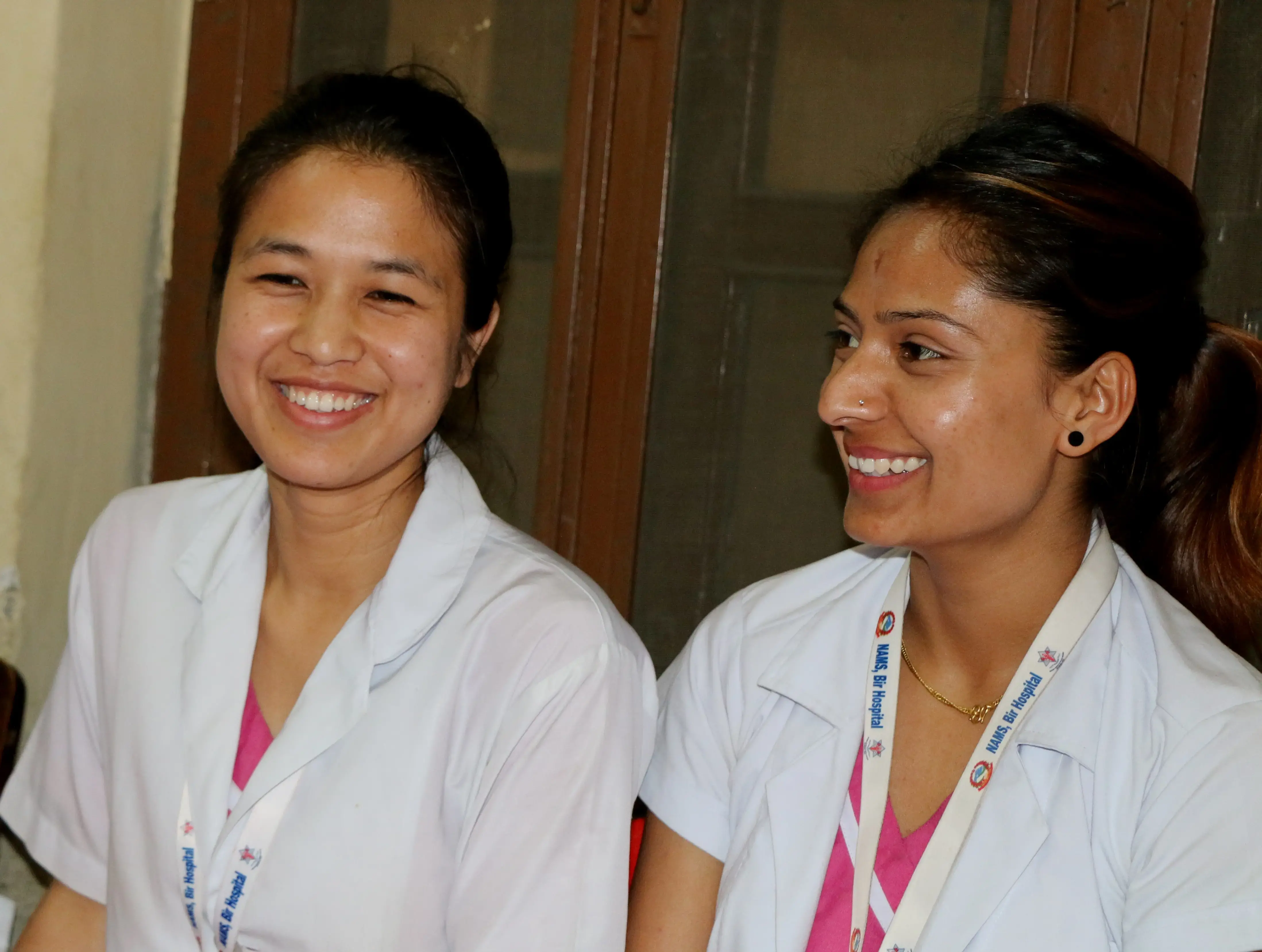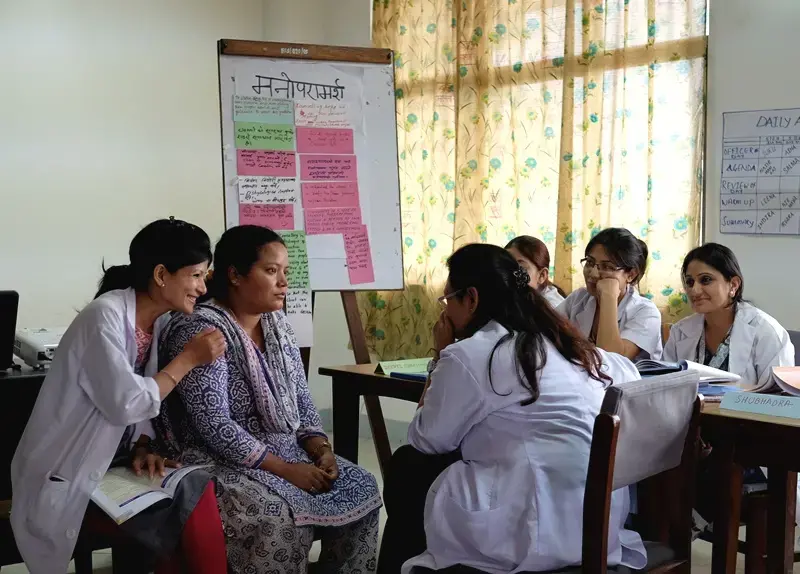“Midwifery is not yet recognized as a skilled profession in Nepal despite its importance in maternal and neonatal healthcare,” explains Rajini Malla, who is a third-year student preparing to graduate with a degree in midwifery from a university in Kathmandu. She is one of 20 students in her year who are part of a UNFPA-supported programme to encourage the growth of a cadre of professional midwives to support the environment for safer births in Nepal. Since the introduction of the course in 2016, there are now five universities offering the course.
Like many of her peers on the course, Rajini is already a trained nurse who has made a decision to develop her career in midwifery based on witnessing a shortage of trained medical professionals in this area. She explains that “many health posts don’t have a gynaecologist or skilled birth attendant. A pregnant mother walked into one of my health centres facing maternal and foetal distress and needed immediate medical care, but there was no one around who could help.” The incident is one of many in Nepal with complications experienced by pregnant mothers that could have been avoided with the presence of specialized staff.
A fellow nurse, Jyoti Karn, recounts her own experience when she was pregnant.
“I remember how hard it was with my twins and to give birth. I faced a lot of challenges—so much abuse, shouting, and what we have been taught here is called obstetric violence. My twins came three hours apart, and I didn't receive anything to help me with the pain. I am sure there are many other mothers out there who have had a similar experience.”
A shortage of skilled birth attendants remains a key challenge for maternal health and in remote villages, the dangers of complications in pregnancy are very real without access to antenatal care and birth facilities. Hemakumari Gharti Magar, another qualified nurse, agrees: “I have worked in three different district hospitals in very remote locations. I have to do everything because there are no gynaecologists or skilled birth attendants. I managed to the best of my ability, but I was worried because I was not competent in this area or trained, so I really wanted to study midwifery, and this is why I opted to take this course.”
For Rojina Lamichhane, there is an especially rewarding aspect of this profession. “I like engaging directly with mothers and new-born babies. I know that my role is important in someone’s life from when they conceive until they become mothers. It pushes me to do better when mothers specifically ask for me, even after one year of delivery, and want me to attend to their questions. This is a relationship of trust that I have formed with mothers, and it inspires me.”
After attending over 100 births, she continues to marvel at putting into practice what she learnt as a student on the course. But the big change for her is in how to approach patients. She explains, “one of the things I really learnt was that, unlike nursing, midwifery teaches you to be kind to mothers and babies, and you learn how to build a relationship with your patients. You have to be devoted to your work and your patients.”
The course is giving these nurses much more than the skills required to be midwives. Hemakumari explains, “in the past six months, I have learnt so much, but more importantly, all the clinical practice has given me the confidence to do better. This, coupled with the theories, has really equipped me with the knowledge and skills I need.”
All these women share a common feeling of empathy in their work as midwives toward mothers and babies. And they share an enthusiasm for the midwifery profession that bodes well for the future, acting as role models to future midwives, and working in communities to increase the safety of births with their skills and experience.





